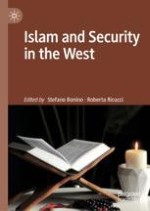2021 | OriginalPaper | Chapter
12. Heroes or Terrorists? Muslim Second Generations in Western Media
Author : Viviana Premazzi
Published in: Islam and Security in the West
Publisher: Springer International Publishing
Activate our intelligent search to find suitable subject content or patents.
Select sections of text to find matching patents with Artificial Intelligence. powered by
Select sections of text to find additional relevant content using AI-assisted search. powered by
